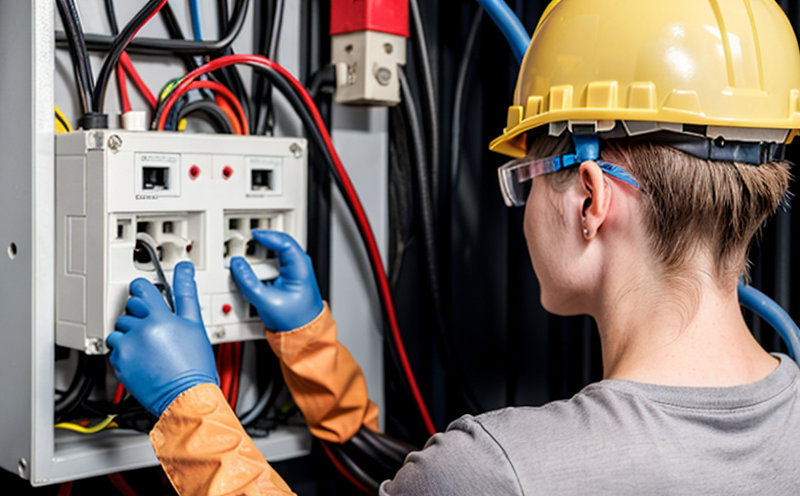IEC 60601-1 Electrical Safety of Connected Medical IoT Devices
The IEC 60601-1 standard is a globally recognized benchmark for ensuring electrical safety in medical devices. This includes connected medical Internet of Things (IoT) devices, which are increasingly used to monitor and manage patient health and wellness remotely. The standard encompasses numerous aspects such as electromagnetic compatibility, protection against electric shock, and operational safety.
Connected medical IoT devices present unique challenges due to their integration with broader healthcare systems and networks. These devices must not only meet the stringent requirements of IEC 60601-1 but also ensure secure data transmission and robust interoperability capabilities. Compliance with this standard is essential for manufacturers aiming to enter international markets, especially those in Europe where the CE marking is required.
The testing procedures under IEC 60601-1 are designed to verify that connected medical IoT devices do not pose a risk of electric shock or fire when used as intended and under reasonably foreseeable misuse. This includes assessing the device’s ability to withstand overvoltages, overcurrents, and other stress conditions without compromising safety.
Testing typically involves simulating real-world scenarios such as power fluctuations, grounding issues, and environmental factors that could affect a device's performance. The goal is to ensure that any potential hazards are identified early in the development process, allowing for necessary modifications before final product release.
In addition to electrical safety considerations, connected medical IoT devices must also address cybersecurity concerns. Given the increasing number of cyberattacks targeting healthcare systems, it’s crucial that these devices implement robust security measures to protect patient data and prevent unauthorized access or manipulation.
| Standard | Year Published | Relevant Section | Key Aspect |
|---|---|---|---|
| IEC 60601-1:2018 | 2018 | Annex A (normative) | Test procedures for basic insulation and protective measures |
| IEC 60335-2-40:2019 | 2019 | Annex A (normative) | Test procedures for electrical equipment in medical practice |
| ISO/IEC 27001:2013 | 2013 | Main body of the standard | Information security management system requirements |
The comprehensive nature of IEC 60601-1 ensures that connected medical IoT devices are not only safe but also reliable and secure in their intended applications. Compliance with this standard can significantly reduce liability risks for manufacturers, improve product quality, and enhance customer trust.
Applied Standards
- IEC 60601-1:2018: This edition updates the earlier version by incorporating new test procedures for basic insulation and protective measures, ensuring continuous improvement in electrical safety.
- IEC 60335-2-40:2019: Provides additional guidelines on testing electrical equipment used in medical practice, reflecting advancements in technology and user expectations.
- ISO/IEC 27001:2013: Focuses on information security management systems, which is essential for protecting sensitive patient data transmitted by connected IoT devices.
Why Choose This Test
- Global Recognition: Compliance with IEC 60601-1 ensures that your product meets international standards, facilitating easier entry into global markets.
- Risk Mitigation: By identifying potential hazards early in the development process, you can minimize risks and avoid costly recalls or legal issues.
- Customer Trust: Demonstrating adherence to rigorous safety and security standards builds confidence among healthcare providers and patients alike.
- Regulatory Compliance: Many regions require IEC 60601-1 certification for CE marking, ensuring that your devices meet regulatory requirements before distribution.
- Innovation Support: The testing process helps refine design and functionality, supporting ongoing innovation in connected medical IoT technology.
- Interoperability: Ensures seamless integration with existing healthcare systems and networks, enhancing overall performance and efficiency.
Competitive Advantage and Market Impact
Compliance with IEC 60601-1 can provide significant competitive advantages by setting your brand apart in the market. It demonstrates a commitment to quality, safety, and innovation that resonates strongly with healthcare professionals and consumers alike.
In today’s highly competitive landscape, having a product that meets these stringent standards can differentiate you from competitors who may not prioritize such rigorous testing. This can lead to increased market share, higher customer satisfaction, and stronger brand loyalty.
The growing trend towards connected medical IoT devices is expected to continue expanding, driven by advances in technology and increasing demand for remote monitoring solutions. By ensuring your products comply with the latest versions of IEC 60601-1, you position yourself as a leader in this evolving field. This can open doors to new opportunities and partnerships within the healthcare industry.
Moreover, compliance with these standards can help streamline regulatory approval processes, reducing time-to-market for your products. Efficiently meeting global safety requirements allows manufacturers to focus on developing cutting-edge features rather than navigating complex regulatory landscapes.





